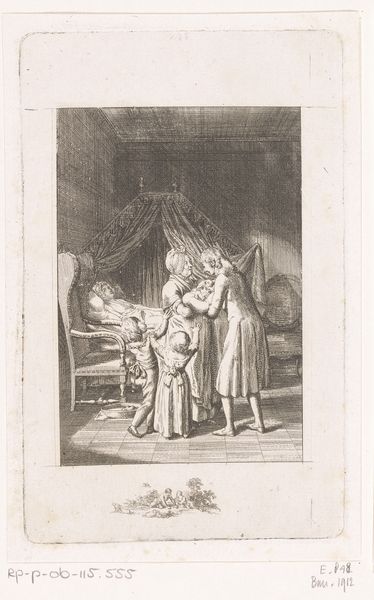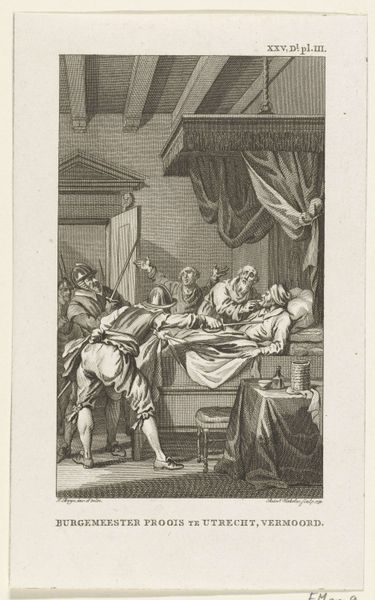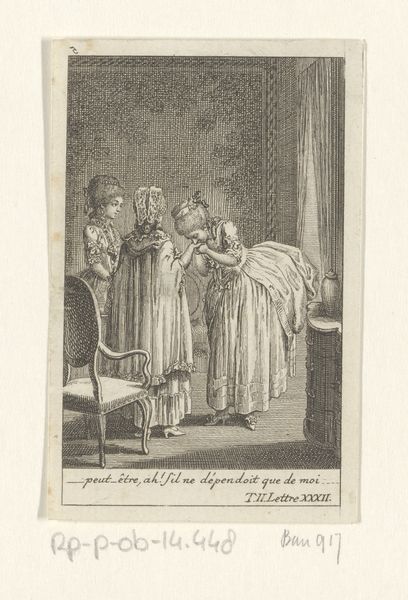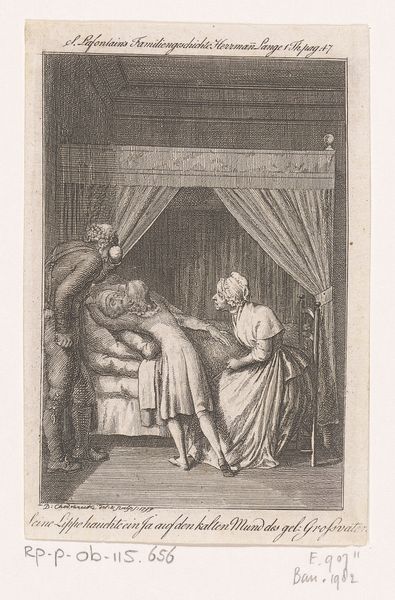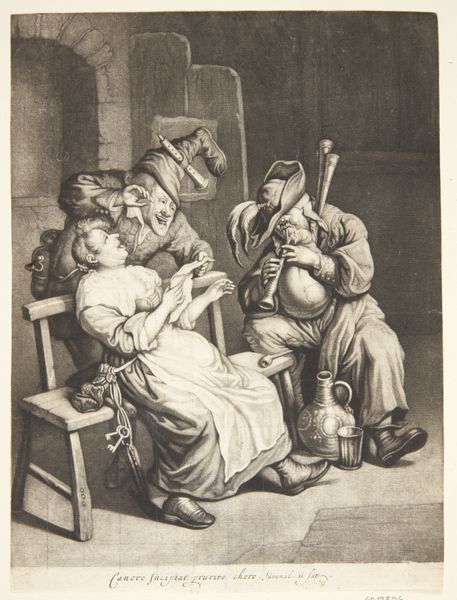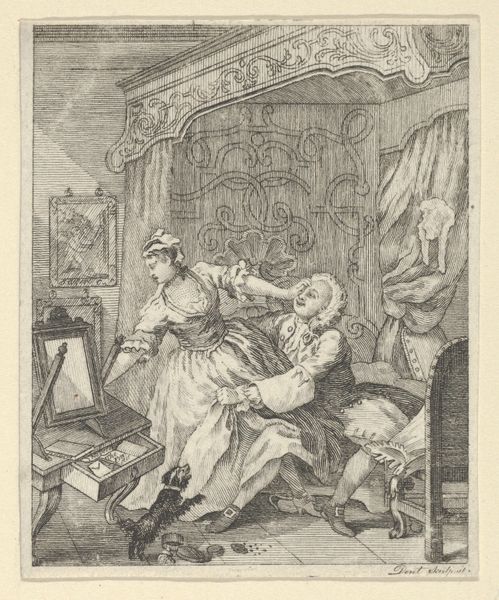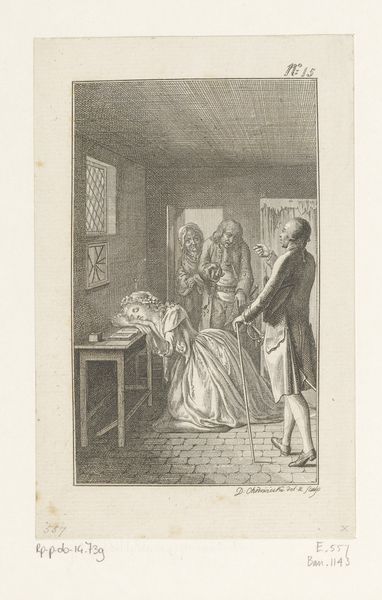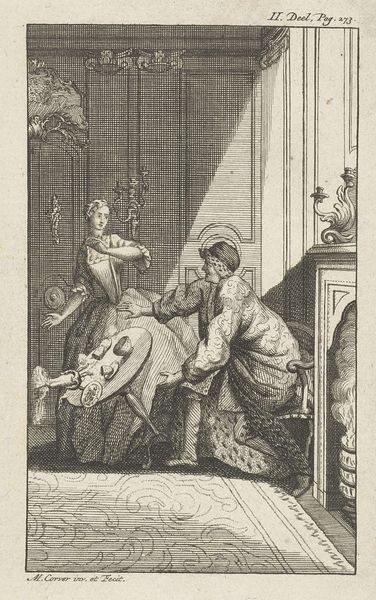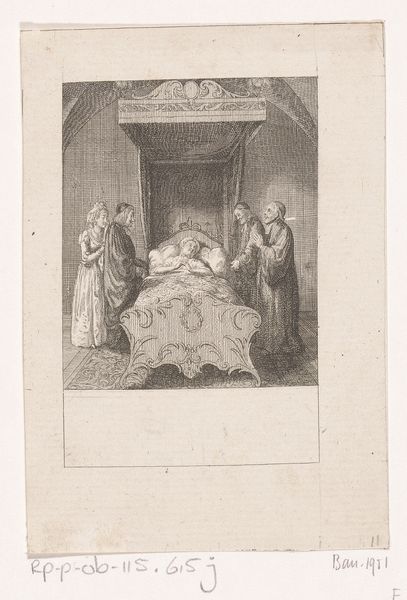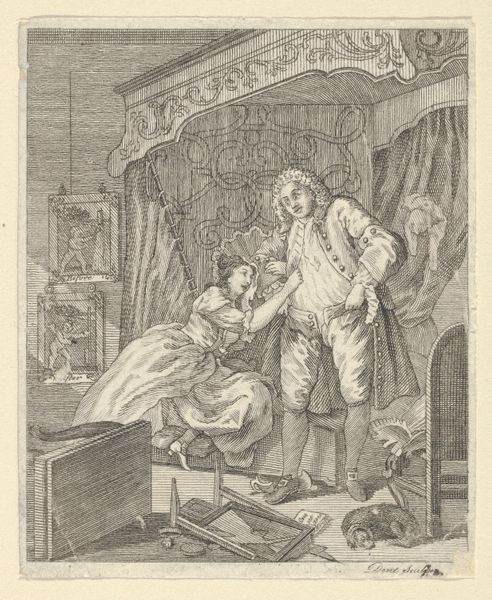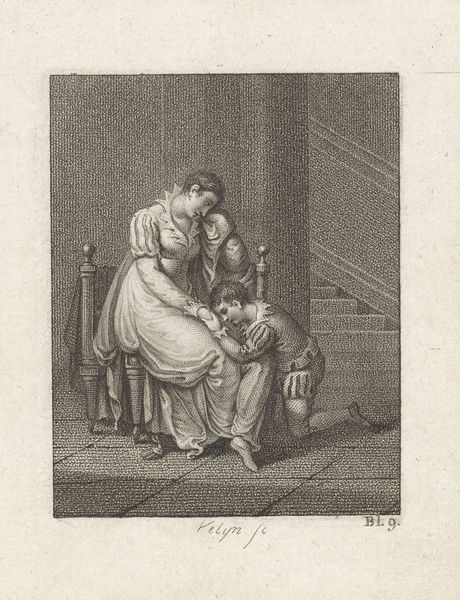
print, engraving
#
neoclacissism
#
16_19th-century
# print
#
traditional media
#
archive photography
#
19th century
#
genre-painting
#
history-painting
#
engraving
Dimensions: height 161 mm, width 105 mm
Copyright: Rijks Museum: Open Domain
Curator: This detailed print, made by Reinier Vinkeles in 1798, depicts "Cardinal Richelieu Directing the Siege of La Rochelle, 1624." It's currently housed in the Rijksmuseum collection. Editor: The first impression is one of careful plotting, an almost unsettling quietude before the storm, isn't it? Everyone seems so absorbed, and the tight composition focuses all attention on their activity. Curator: Absolutely. Vinkeles, working in the Neoclassical style, renders this historical scene with a sense of gravity and purpose. He invites the viewer to contemplate the strategic thinking involved in Cardinal Richelieu's actions, and, beyond, the complex interplay of politics and power. The historical weight is certainly there. Editor: Indeed, it’s fascinating how Richelieu is centrally seated, presiding with such deliberate gestures as he lays siege on the map of La Rochelle, itself such a powerful symbol, almost like a flag of dominance being unfurled. And he's pointing to the map of La Rochelle! Maps often function as potent symbols, projecting ideas of control and dominion. Curator: Precisely. The context is crucial. This engraving visualizes a key moment in the Siege of La Rochelle, where Richelieu's forces blockaded the Huguenot city. This event solidified royal authority in France and heavily influenced its religious landscape. It’s interesting to note, as well, the propagandistic power of imagery as it relates to historical narrative and political gain. Editor: The visual contrast between the richly attired Cardinal and his intent advisors adds to that impression of control. The act of directing this military action appears as calculated and deliberate; it’s almost ritualistic. Even the subdued palette contributes to a feeling of intense concentration, pushing a visual language towards absolute dominance. Curator: Which makes this engraving a great example of 19th-century history painting intended for a wide audience, solidifying narratives and justifying authority figures. It definitely plays to a certain public sentiment and informs socio-political discourses on power and religion. Editor: It is truly fascinating to consider how visual imagery serves as both record and shaper of public memory. Curator: Indeed, and remembering the influence of socio-political contexts reminds us to carefully inspect historical images to tease out embedded viewpoints and underlying power structures.
Comments
No comments
Be the first to comment and join the conversation on the ultimate creative platform.
